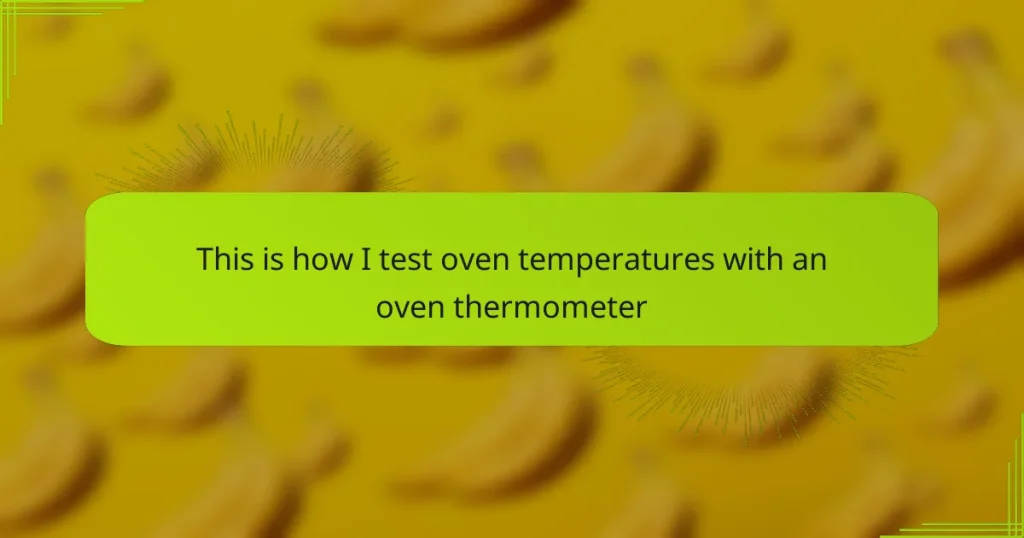Key takeaways
- Oven thermometers are essential tools for accurate baking, helping to eliminate guesswork and ensure precise temperatures.
- Testing oven temperature by placing a thermometer in the center and allowing it to stabilize provides critical insights into actual oven performance.
- Adjusting oven settings based on thermometer readings enhances consistency and reliability in baking results.
- Always preheat the oven fully and maintain a consistent thermometer placement for optimal baking outcomes.
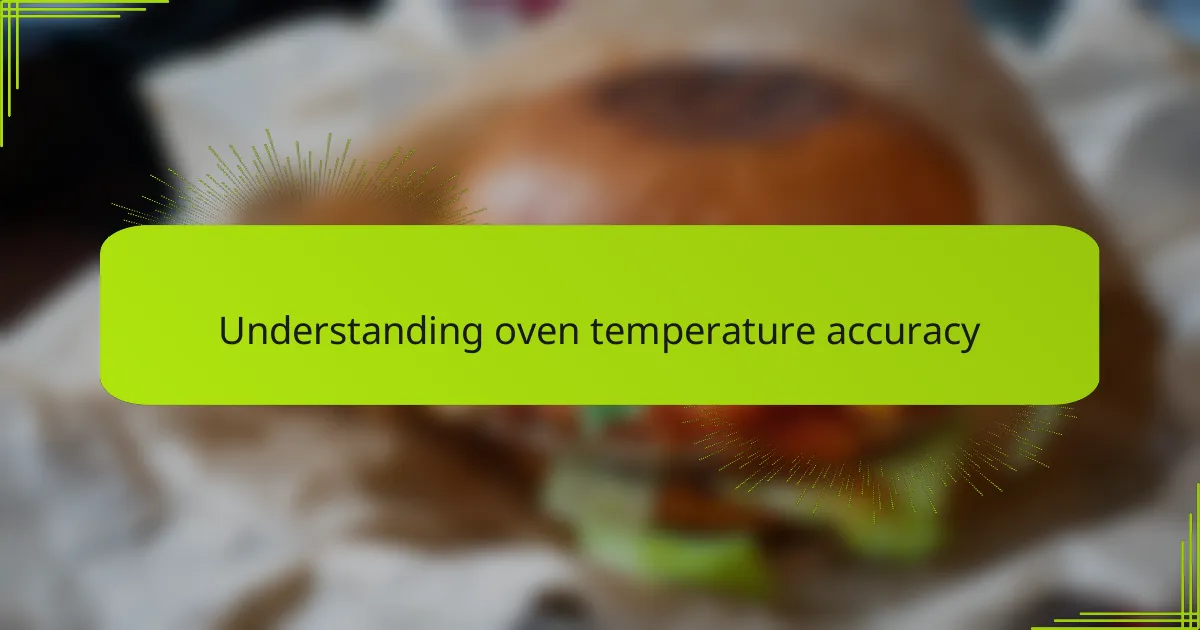
Understanding oven temperature accuracy
Oven temperature accuracy is often taken for granted, but from my experience, even small deviations can make or break a dessert. Have you ever noticed your cake browning too fast or not rising as expected? That’s usually a sign your oven’s internal thermostat isn’t as reliable as you think.
I remember the frustration of repeatedly baking cookies that came out either underdone or burnt, despite strictly following recipes. It was only after using an oven thermometer that I realized my oven’s actual temperature was off by nearly 25 degrees. This little device revealed how “accurate” oven dials can sometimes be more of a rough guideline than a precise setting.
Understanding how your oven’s temperature compares to what it displays is crucial for baking success. After all, desserts are delicate – they demand consistent heat. Knowing the true heat inside your oven gives you the confidence to adjust baking times and temperatures intentionally, rather than guessing and hoping for the best.
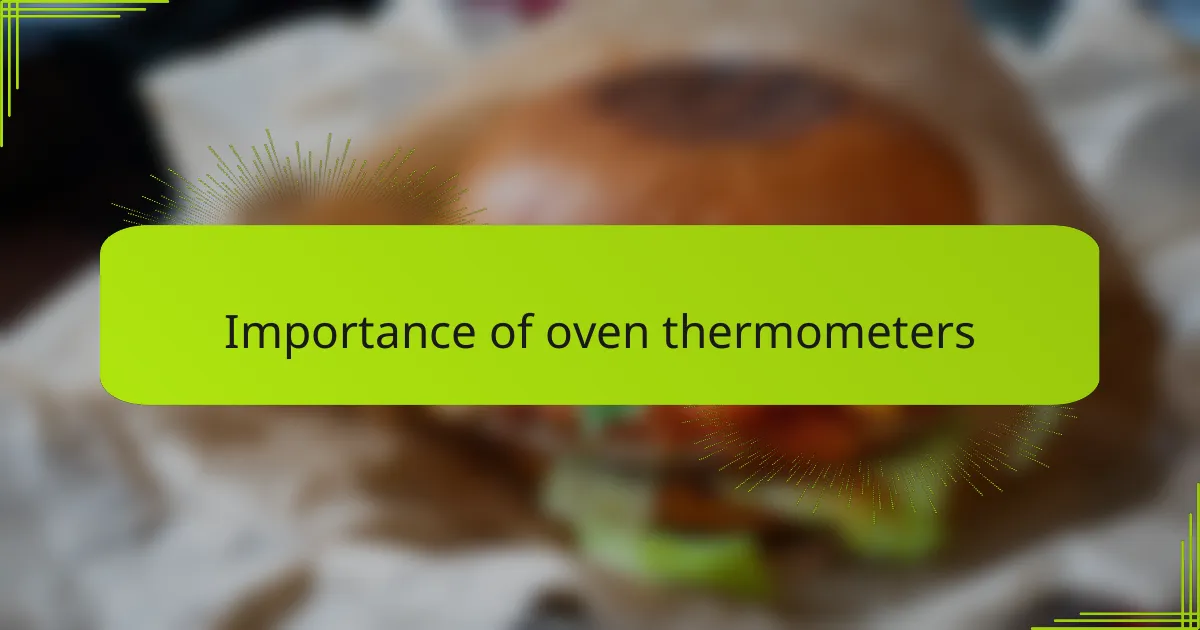
Importance of oven thermometers
Oven thermometers might seem like a small tool, but from my experience, they’re absolutely essential for any serious dessert baker. Have you ever felt the disappointment of a dessert that just didn’t turn out right, despite following the recipe to the letter? That’s exactly when an oven thermometer becomes your best friend—it takes the guesswork out of baking by showing you the real temperature inside.
I remember the moment I first used one and saw how wildly my oven’s temperature fluctuated—it was eye-opening. This simple device gave me control, turning baking from a hopeful experiment into a consistent craft. Without an oven thermometer, you’re basically baking blind, hoping the heat matches what’s on the dial, but it often doesn’t.
Knowing the importance of accurate temperature means you can avoid wasted ingredients and the frustration of failed desserts. It’s not just about precision; it’s about trusting the process and feeling confident that your oven is really doing its part. Have you tried baking with an oven thermometer yet? If not, it’s a game-changer worth exploring.
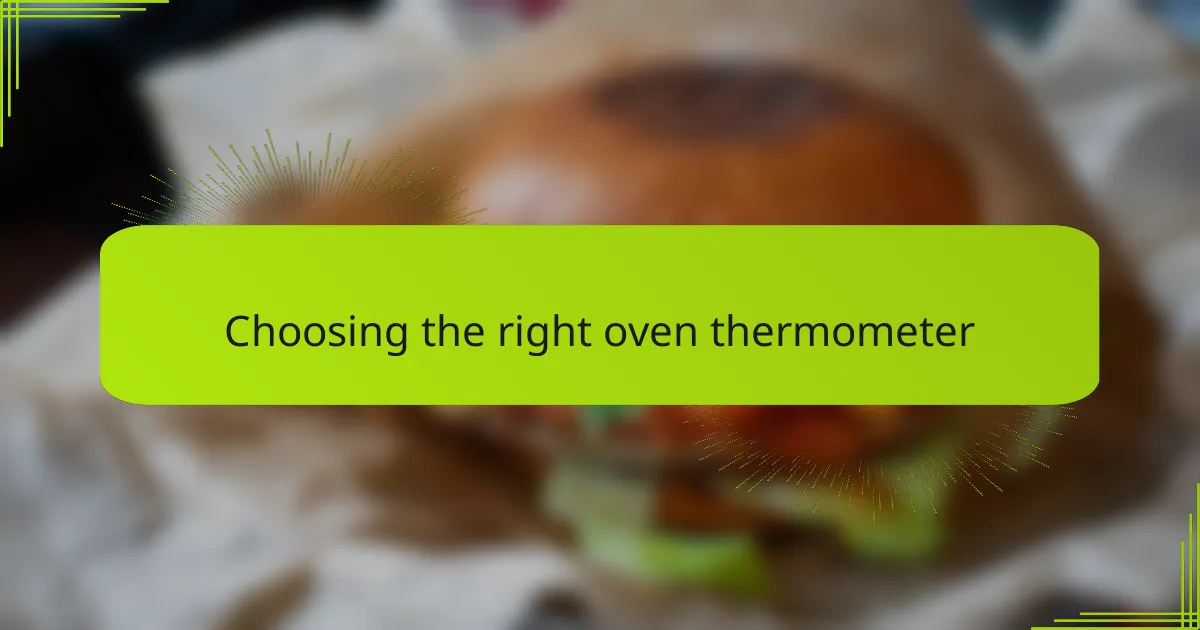
Choosing the right oven thermometer
Choosing the right oven thermometer felt overwhelming at first—there are so many types and features—but I learned that simplicity often works best. Have you ever picked up a fancy gadget only to never fully understand how to use it? For me, a clear dial with easy-to-read numbers was a game-changer. It let me quickly check the temperature without squinting or guessing.
I prefer analog thermometers because they’re sturdy and don’t rely on batteries, which means they’re always ready when I need them. Plus, the classic design gives me a quick visual gauge of my oven’s heat, which fits perfectly into my baking routine. From my experience, investing in a reliable but straightforward thermometer saves so much stress during dessert prep.
One thing I often remind fellow bakers is to choose a thermometer that can handle high temperatures without breaking or losing accuracy. It’s frustrating to think you’re measuring heat precisely, only to find your thermometer was off because it wasn’t built for baking’s hot environment. Have you ever had that disappointment? Getting the right tool is the first step toward consistent, delicious desserts.
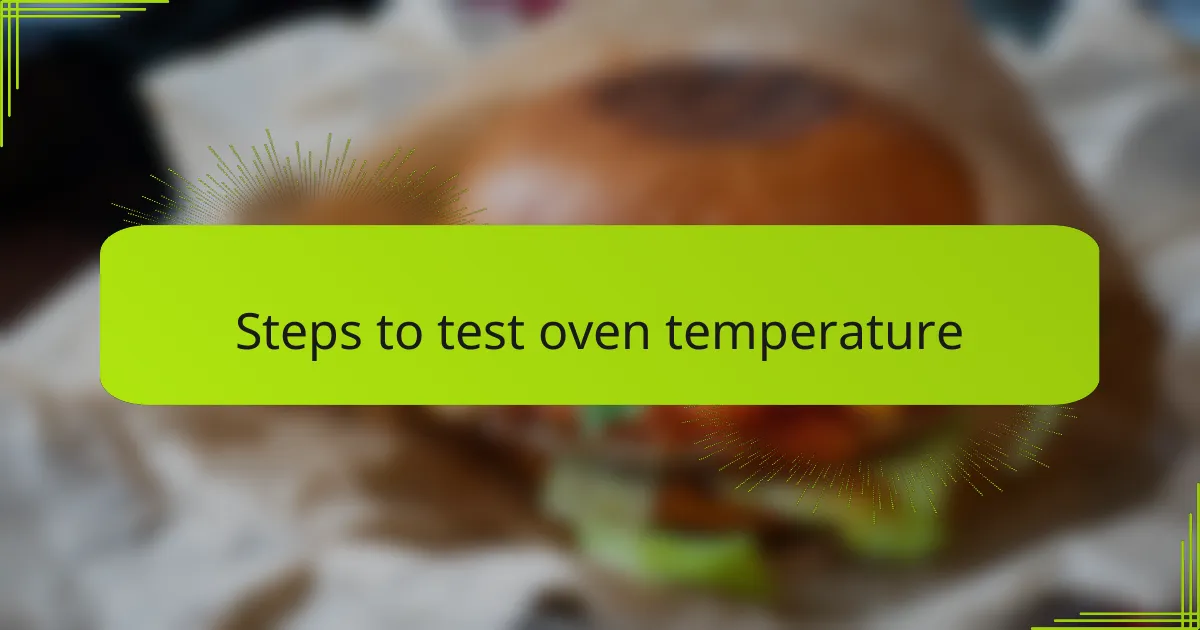
Steps to test oven temperature
Once I placed my oven thermometer right in the center of the middle rack, which I’ve found is the most reliable spot to get an even reading. Have you ever wondered if your oven heats unevenly? Checking the temperature there gives you a solid baseline, so you can trust the number you see. Then I close the door gently to avoid heat escaping, because every degree counts when you’re baking delicate desserts.
Next, I turn on the oven to the temperature my recipe calls for and let it preheat fully—usually at least 15 minutes. From my experience, rushing this step only leads to inaccurate readings and unpredictable baking results. Watching the thermometer closely during this time helps me spot any big temperature swings that might mess with my dessert’s rise or texture.
Finally, I wait for the thermometer to stabilize at a number, which sometimes takes a few minutes longer than expected. Have you ever felt that “aha” moment when you realize your oven isn’t quite hitting the mark? When my oven’s actual temp differs from the setting, I adjust the dial or baking time accordingly. This little habit has saved me countless burned edges and undone centers, turning my baking from guesswork into precision.
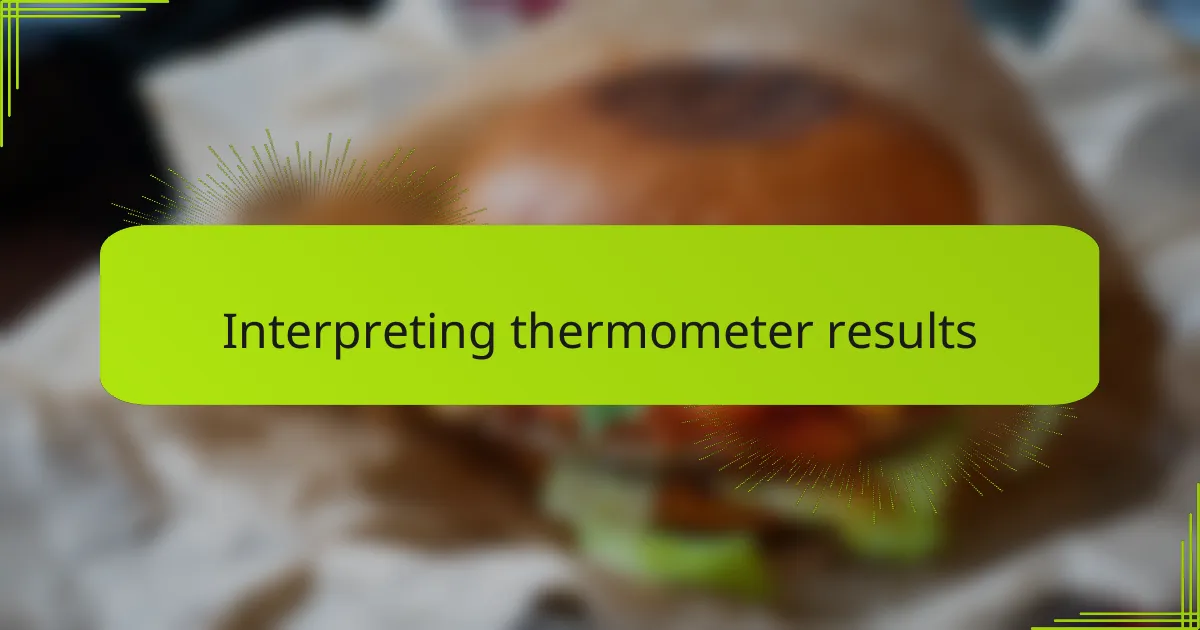
Interpreting thermometer results
Interpreting the thermometer’s reading is where the real magic happens. When I first saw my oven thermometer settle at a temperature different from the dial setting, I was surprised—and honestly, a bit frustrated. Have you ever felt that disconnect between what your oven says and what your thermometer shows? It’s a crucial moment because that number tells you the truth about your oven’s performance.
Sometimes, the thermometer reading fluctuates as the oven cycles on and off. From my experience, it helps to take an average over a few minutes rather than reacting to a single spike. I’ve learned to patiently watch the dial until the reading steadies, which gives me confidence that the oven temperature is truly stable and ready for baking.
What do you do if the thermometer shows your oven running hot or cold? I adjust accordingly—lowering or raising the temperature on the dial or tweaking baking times. This small step took my desserts from inconsistent to dependable. Trust me, interpreting these readings isn’t just about numbers; it’s about understanding your oven’s unique behavior and using that insight to bake with confidence.
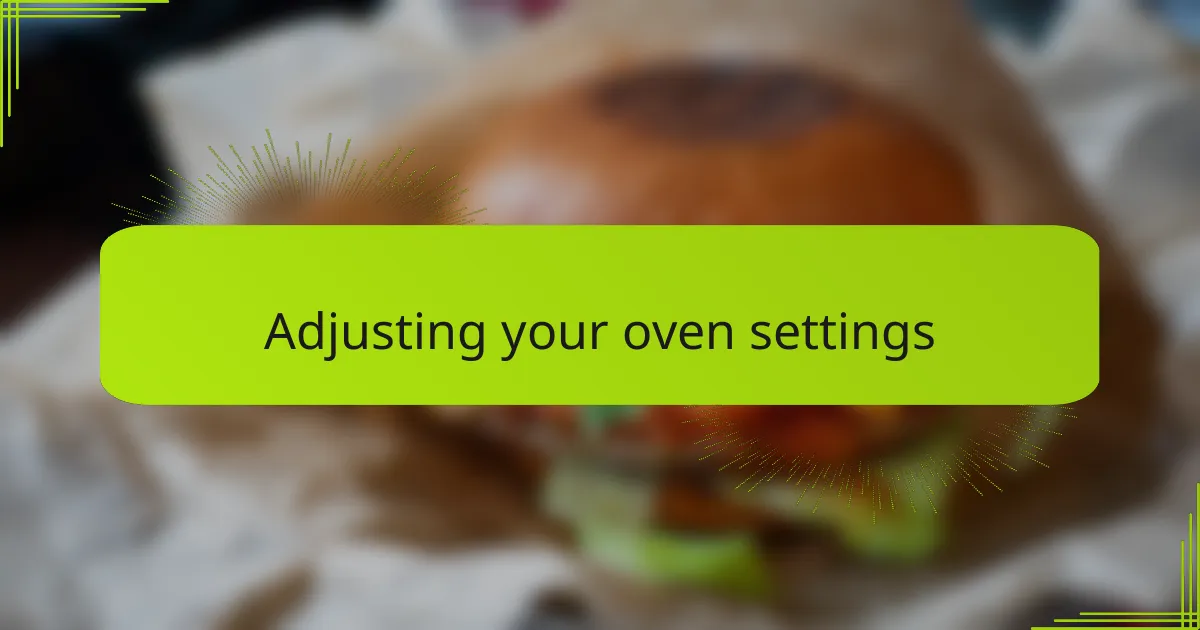
Adjusting your oven settings
Adjusting your oven settings became less intimidating once I realized the oven dial isn’t always truthful. Have you ever felt like you were guessing, turning the knob here and there, hoping the heat’s just right? I did, until I started making small tweaks based on what my thermometer showed me.
Sometimes, I found my oven ran hotter than the dial indicated, so I dialed it down by 10 or 15 degrees and got better results. Other times, I had to crank it up a bit if my thermometer peeked low. It felt like learning a secret handshake with my oven—once I tuned in, baking desserts became so much more predictable.
Adjusting settings isn’t just about numbers, though. It’s about trusting what your thermometer tells you and being willing to experiment a little. Have you ever hesitated to tweak the dial because you feared ruining your bake? Taking that leap made all the difference for me, transforming stress into a more relaxed, confident baking process.
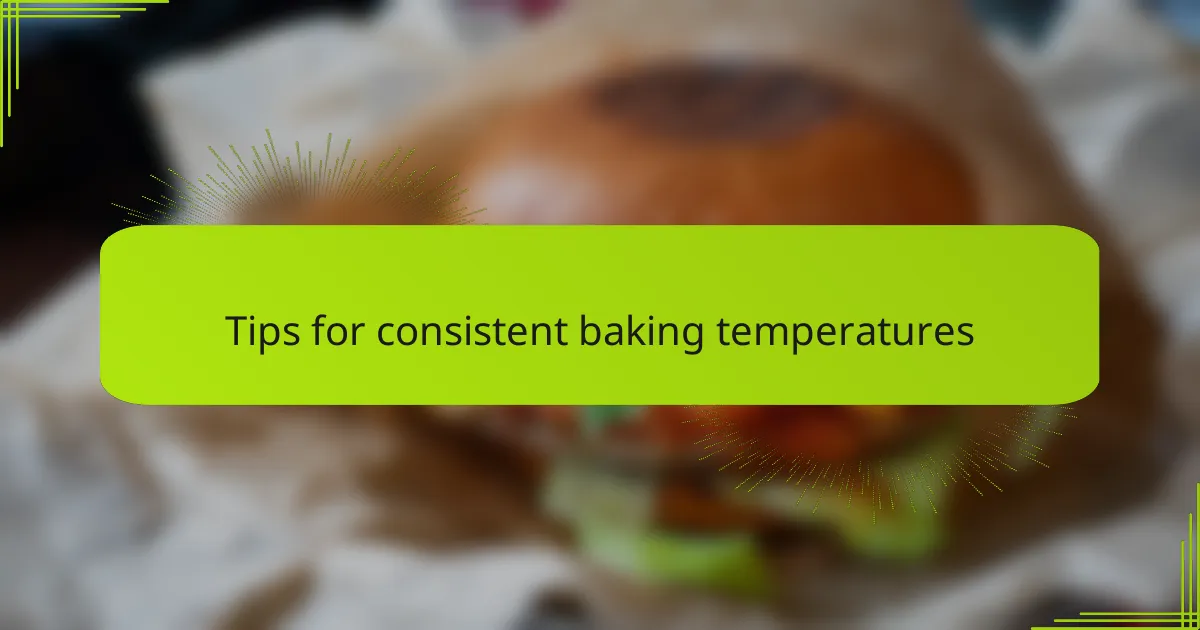
Tips for consistent baking temperatures
Consistency in oven temperature doesn’t just happen by chance—it takes a bit of care and attention. I’ve learned that always placing the thermometer in the same spot, usually the center of the middle rack, is key. Have you ever moved your thermometer around, only to get wildly different readings? Keeping it consistent helps me trust the numbers and avoid surprises.
Another tip that really changed my baking game is preheating the oven fully before starting any bake. Skipping this step felt like setting myself up for uneven results—I’d rush and then wonder why my soufflé sank or my cookies spread too much. Waiting at least 15 minutes until the thermometer stabilizes gives the oven time to reach that perfect heat zone.
Lastly, I’ve found that embracing small adjustments based on my thermometer’s readings keeps things steady. When your oven runs a little hot or cool, don’t be afraid to tweak the temperature by 10 or 15 degrees. Have you ever adjusted your settings only to see immediate improvement? Those little shifts transform baking from a guessing game into a reliable, enjoyable process.
